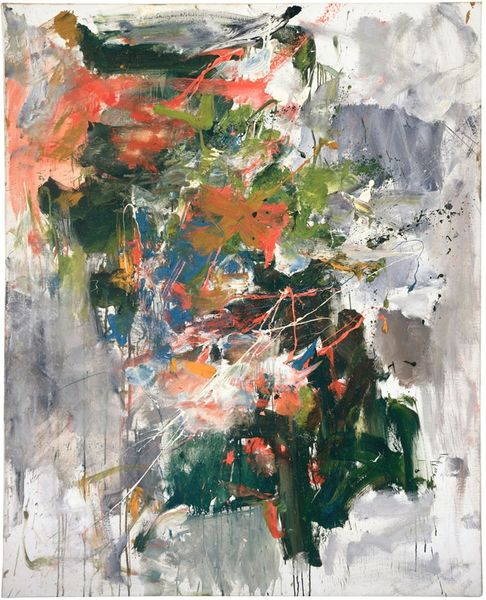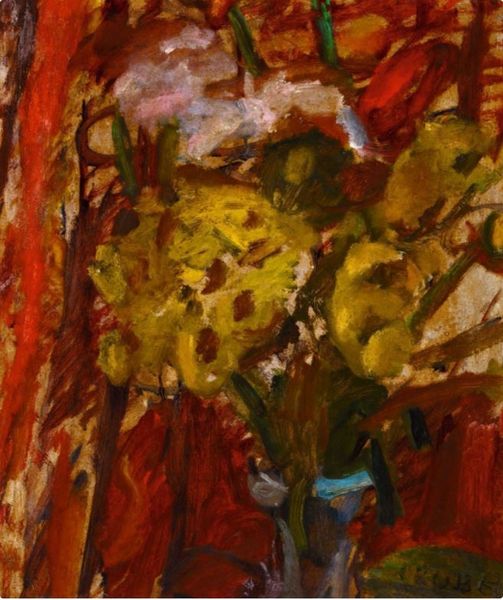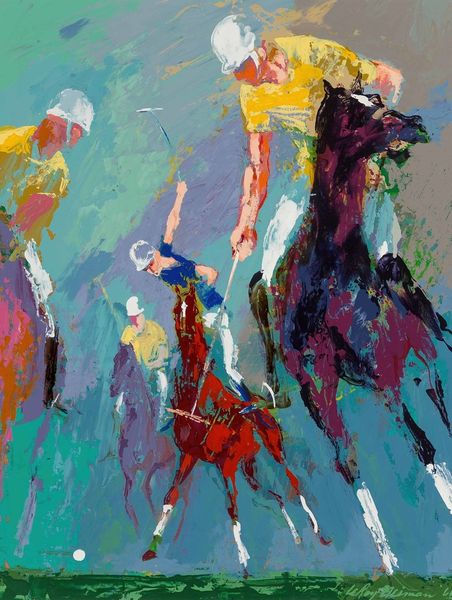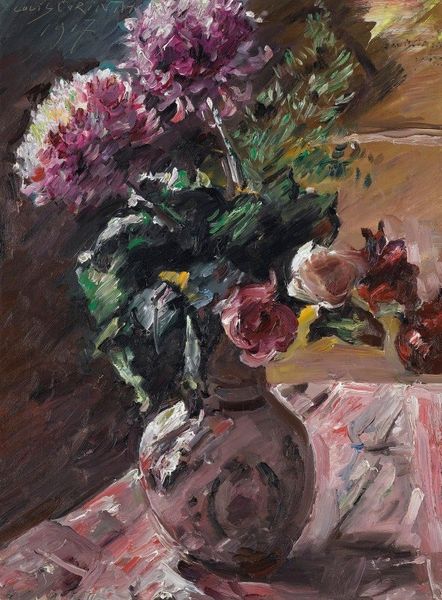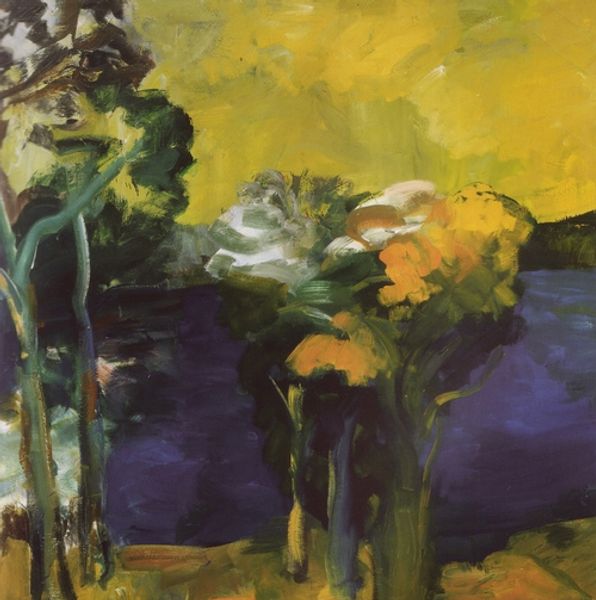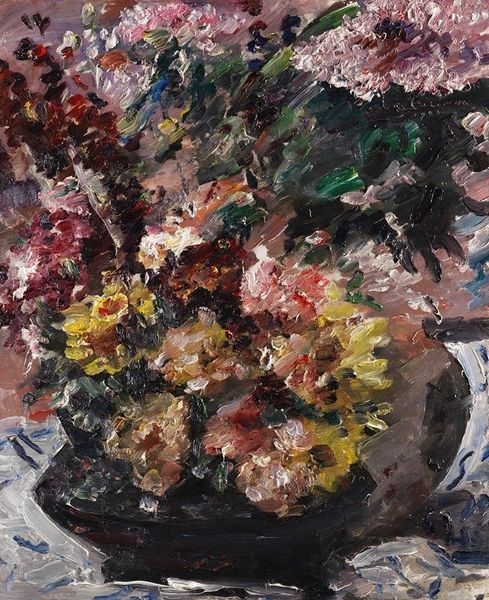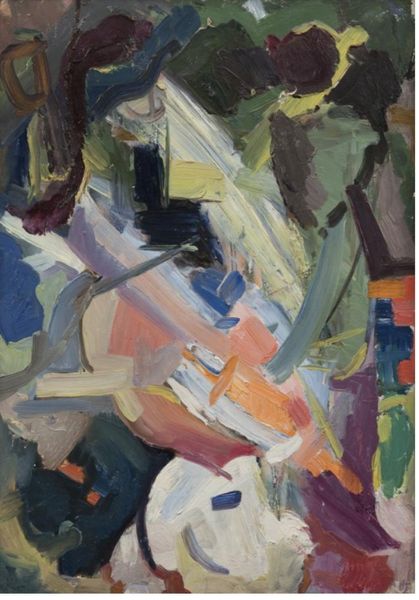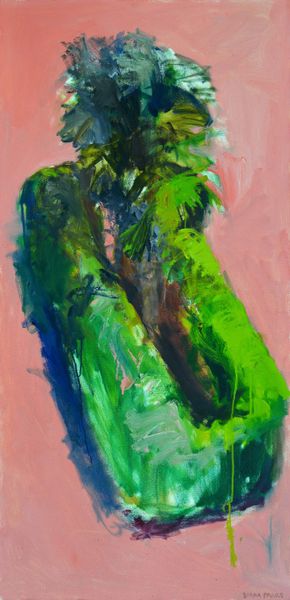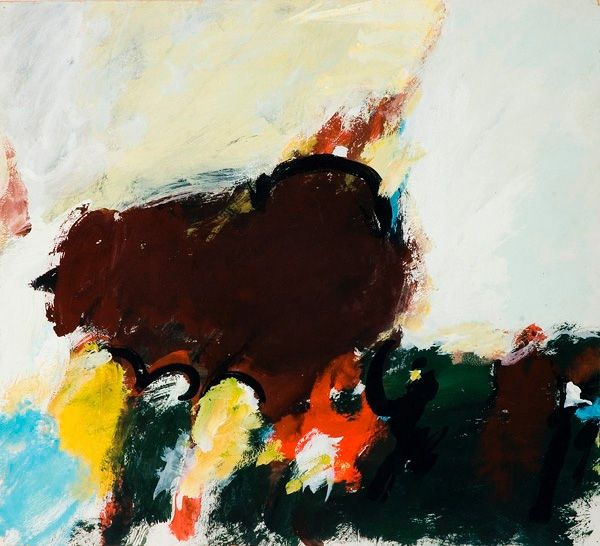
painting, oil-paint
#
painting
#
oil-paint
#
german-expressionism
#
oil painting
#
neo expressionist
#
expressionism
#
expressionist
Copyright: Public Domain: Artvee
Editor: We're looking at Lovis Corinth's "Flieder Im Glaskrug," or "Lilacs in a Glass Jug," painted in 1923, an oil on canvas. I’m struck by how dynamic it is. The brushstrokes are so visible, almost aggressive, and yet it creates a sort of soft, shimmering effect. How do you interpret Corinth's application of paint in this piece? Curator: The visible brushwork is indeed key. Corinth utilizes a bravura technique, allowing the materiality of the paint to become a significant element. Consider the impasto – the thick application of paint – which catches light and contributes to the textural richness. Note the relationship between the cooler, subdued palette of the jug and the more vibrant hues in the lilacs. How does this contrast function compositionally? Editor: I suppose the contrast highlights the flowers, drawing my eye upward and giving them more importance. Is that common for still lifes of this period? Curator: One might consider that, yet it moves beyond a straightforward, representational goal. Instead, Corinth uses the subject matter as a vehicle to explore color relationships and the gestural possibilities of oil paint. There’s a palpable tension between representation and abstraction; the forms are discernible, yet dissolve into fields of color and light upon close inspection. Notice the almost sculptural quality achieved. Editor: So, the flowers aren’t just flowers; they’re a way for Corinth to express his artistic ideas using texture, color, and composition. Curator: Precisely. It exemplifies how the artist prioritizes the formal qualities – line, shape, color, texture – to create a visual experience. Editor: That’s really insightful. I see it now – it’s much more than just a vase of lilacs! It's about the paint itself. Curator: Exactly. We appreciate the painting for what it is as a visual object, focusing less on any symbolic intent.
Comments
No comments
Be the first to comment and join the conversation on the ultimate creative platform.

